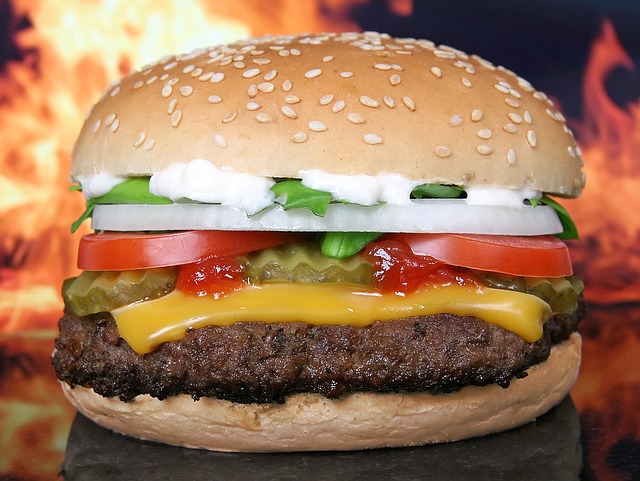One of the challenges of living a Keto–Paleo lifestyle is finding anything resembling familiar foods. It would be ideal when engaging a major shift like this to be able to wipe your memory of all your past experiences in the area of change so you could start fresh. But that is not available to us as far as I am aware. Consequently we are stuck with a lifetime of established habits, preferences, likes, and dislikes that we have to contend with when we make any significant changes to how we want to live our lives.
I have been looking for those compromises and substitutions dietarily to enable me to live within the confines of the more healthy Keto-Paleo eating style while allowing my historical preferences to still have their say. One of the challenges that has always eluded me up till now has been to find an adequate replacement for the hamburger bun. Keto-Paleo breads always seem to
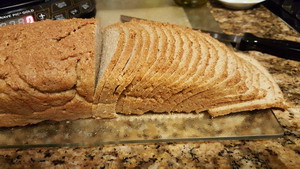
come out like most quick breads – rather fragile and crumbly. The lack of the stretchy gluten that wheat adds is essential to the normal flexibility we associate with most bread products. All my past attempts to produce an adequate bun replacement end up crumbling into a hopeless mess with the first bite of the burger. The closest I have gotten is with rice flour and tapioca flour breads, which are not Keto at all.
Well recently YouTube gifted me with a recipe for a keto hamburger bun that actually functioned just like a normal white bread all-American bun. I needed to make a few adjustments to the recipe to make it actually taste good, but the basic structure was there. It had the delightful
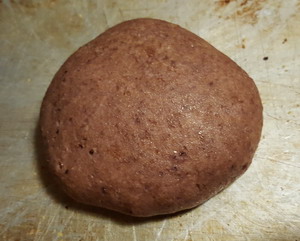
springy inner soft bread quality and it had the thin firm outer crust that held it all together, yet was still soft and pliable. The only thing missing was the traditional white and light brown color. This bun has a color that is somewhere between whole wheat and purple/ grey. The reason for this color is the use of psyllium seed powder.
Psyllium seed is an interesting ingredient. Most of us are familiar with psyllium in its marketed trade name, Metamucil. That’s right, the stuff you take with lots of water to resolve constipation. It is entirely fiber, but of a very slimy sticky type. It is the sticky factor that imitates the gluten missing from Paleo breads. The part I am using here is the outer husk of the psyllium seed. This part is almost entirely fiber, with one third being soluble fiber and two thirds insoluble fiber. Both parts absorb water and add bulk to the colon helping things move along. Interestingly psyllium also helps diarrhea by blocking calcium ion channels. Because of the bulk it forms, it slows down the absorption of sugar in a meal thereby lowering blood sugar levels. It also binds
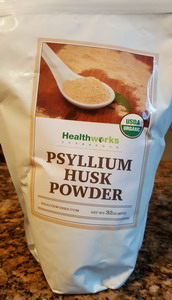
cholesterol in the bile excreted by the liver lowering cholesterol levels. There are studies that show psyllium even helps irritable bowel and ulcerative colitis.
The big plus for me with psyllium is that it is basically all fiber – no protein, sugar, fat, anything. This is perfect for an addition to a Paleo-Keto eating plan – no carbs. But like any “magical” food ingredient you have to use common sense. Too much fiber can cause intestinal blockages, so don’t go overboard. It is safe on an everyday basis. Just be sure to consume lots of water along with the psyllium as it absorbs a lot in the gut.
So, on to the recipe:
2 ½ cups Almond flour or cold milled Flax seed
10 Tbs. Psyllium husks
2 tsp salt
2 Tbs Dr Dave sugar
2 tsp baking powder
1 cup barely of egg whites (or ¼ cup dried egg whites + ¾ cup water)
4 tsp apple cider vinegar
2 cups boiling water
1 Tbs. Nutritional yeast
1 tsp. Active dry yeast
2 tsp. Fish sauce
mix on high – forms a rubbery mass quickly
form into 12 patties with wet hands
bake at 350 preheated oven for 60 minutes
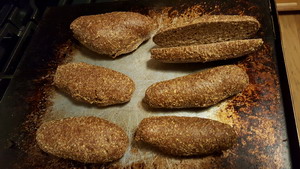
For us I usually make a half recipe. If you want you can roll it into hot dog shapes to form buns for organic healthy hot dogs or paleo chicken sausages. These buns puff up quite a bit. It does take the full hour to cook out all the water, otherwise the end product will be all sticky and gummy.
For fun I pushed the envelope and rolled out a half recipe into a pizza crust. It still took the full hour to cook without any toppings, but the final product turned out wonderful – just like a real pizza crust. I saved the crust overnight and put toppings on it the following day, baking the toppings just long enough to melt the Diaya mozzarella cheese shreds. The crust was excellent. It even passed
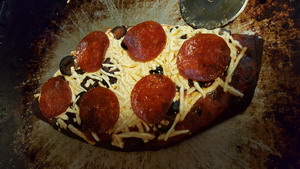
the real test: the cold pizza for breakfast the next day test.
The buns have passed the full size, grass fed, beef burger test as well as the organic Polish sausage test. For the dog buns I used the flax seed, which made the buns feel more like hearty whole grain buns as opposed to the more “white bread” texture to the almond flour buns.
As a last bit of fun I made up a half recipe of the almond flour dough to which I added a couple extra tablespoons of Dr Dave sugar and some vanilla and butter flavor. As I did with the pizza crust, I rolled this out between two sheets of parchment paper into a rectangular shape. I then tossed on some cinnamon and Dr Dave sugar and drizzled some melted butter. Using the parchment paper as a guide, I rolled this up into a long roll and cut it into slices for cinnamon rolls. These came out delicious, but if I do this again I will leave out the butter until after the baking is done. The butter kept the dough too moist. But the proof of concept is there – Keto-paleo cinnamon rolls.
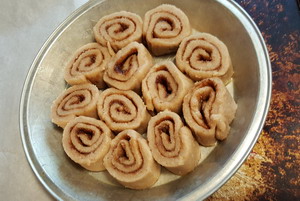
The weird thing is these rolls are basically just fiber, a little protein, and a little fat, yet they taste like the real thing.
So this is a big win for this little recipe and for us Keto lifestyle folks. It can be used many ways to substitute for some of our favorite traditional dishes.
Enjoy,
David
